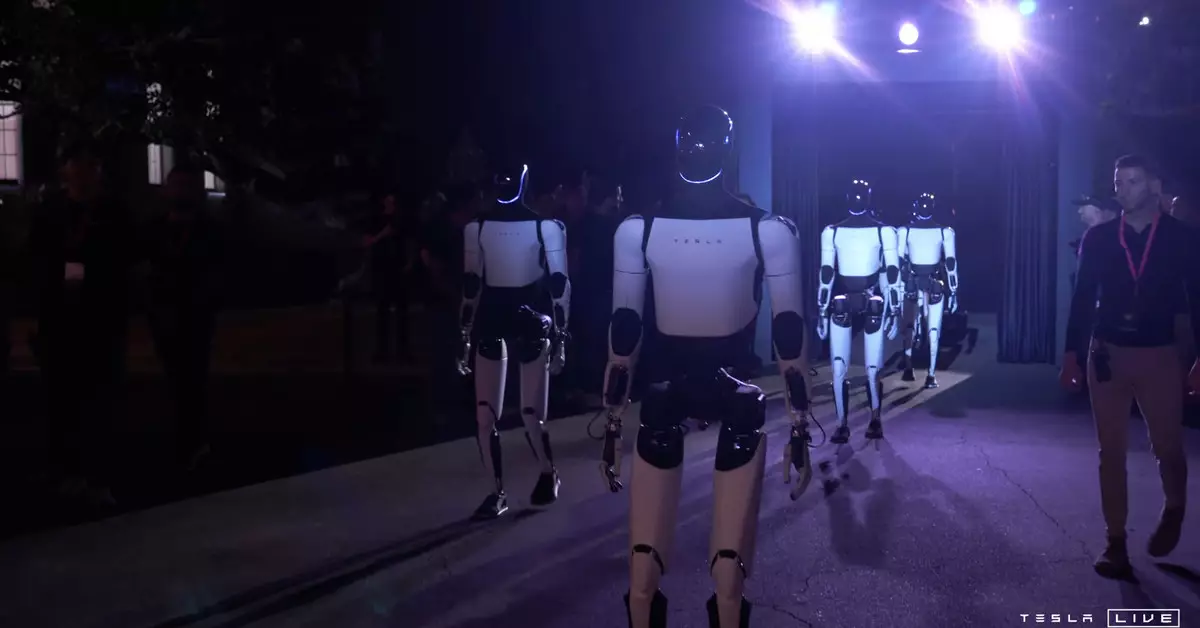At Tesla’s recent Cybercab event, the spotlight fell not just on their new Robovan but also on the humanoid Optimus robots. These presentations offer a glimpse into Elon Musk’s ambitious vision for the future— a world where humanoid robots seamlessly integrate into daily life, performing a range of tasks from watering plants to serving drinks. This endeavor marks a significant pivot from traditional perceptions of robotics, transforming them from mechanical tools into life companions that share our spaces and duties.
Musk’s confidence in the capabilities of the Optimus robot shines through his statement suggesting it “can basically do anything.” While it is easy to get swept up in grand assertions about a machine handling daily human activities such as dog walking and lawn mowing, one must pause and evaluate the practicality of these claims. Is the technology truly advancing to the point where such seamless integration is possible, or are we simply hearing overzealous marketing hype? The projected price of $20,000 to $30,000 raises eyebrows regarding affordability and whether these tasks can be executed effectively without a significant technology leap.
A Reality Check: The Current Limitations
During the event, the interactions between humans and Optimus robots were notably restrained. Observers noted that much of the robots’ activities were limited to basic gestures such as waving or holding ice cups. Although there were attempts at engaging with guests through simple games like rock-paper-scissors, these interactions showcased the robots’ limitations rather than their capabilities. The spectacle of robots dancing in an enclosed gazebo was entertaining but left many pondering whether these displays indicated significant advancements or rather the spectacle of capabilities yet to be realized.
Tesla’s journey with the Optimus robots is reminiscent of the company’s earlier days in electric vehicle production—marked by bold proclamations and incremental steps. The early iterations of Tesla’s humanoid robots saw prototypes that barely managed to walk, a stark contrast to Musk’s promises of efficient and capable machines. However, with Musk mentioning the potential for these robots to undertake “useful tasks” by the end of this year, the company seems to be gravitating towards delivering on its promises. The timeline indicates that practical applications might be more than just distant visions but rather a pathway that Tesla is committed to navigating.
As discussions surrounding humanoid robots evolve, the focus must shift from mere functionality to consideration of their roles in society. If Optimus is to become a significant product in our lives as Musk predicts, we must explore the societal implications of such technology. Will these robots enhance our living standards, or will they face criticisms associated with job displacement and social interaction? The success of the Optimus project might not merely hinge on technical achievements but more critically on the narratives and structures that society evolves alongside these advancements.
Ultimately, the Optimus project embodies a tantalizing vision of the future—one that merges innovation with everyday life. However, as Tesla forges ahead, a balanced view advocating both enthusiasm and skepticism will be crucial in navigating this frontier of humanoid robotics.

